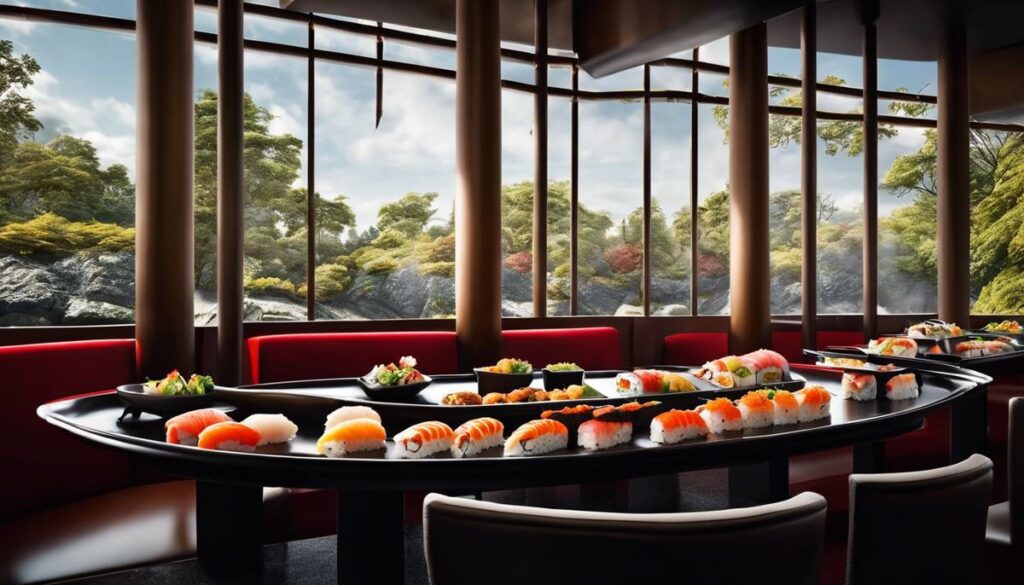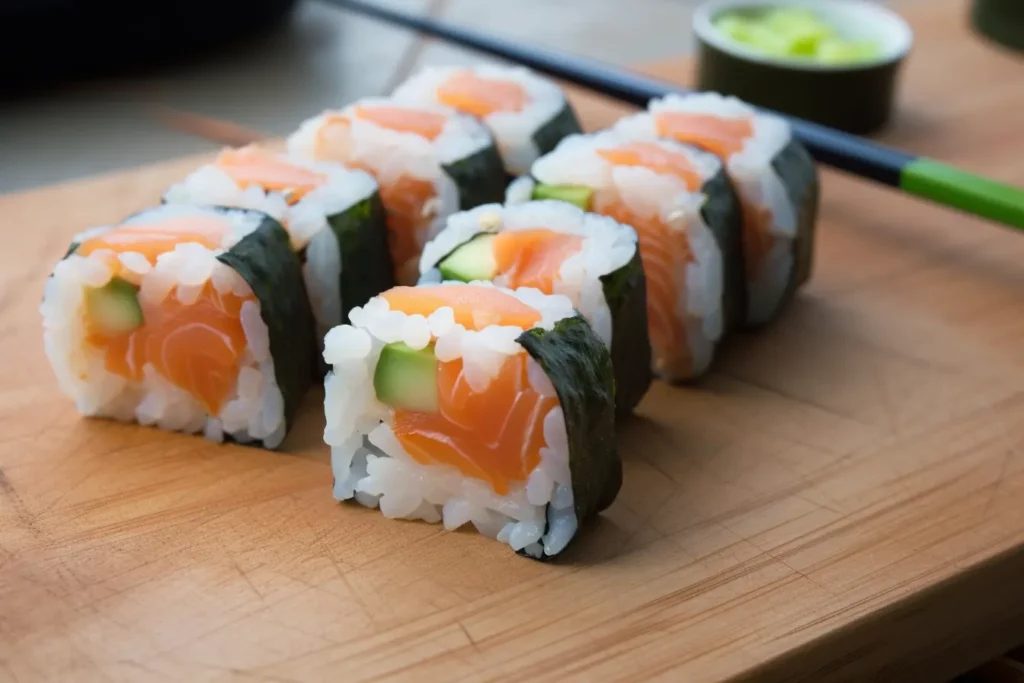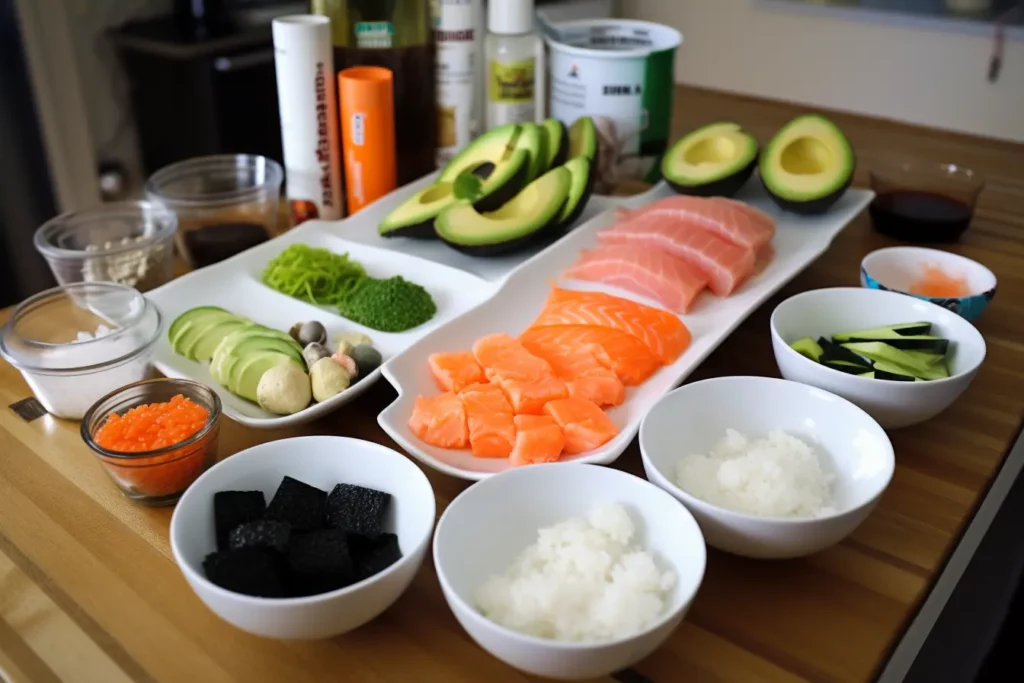The presence of sushi in pop culture is a fascinating phenomenon that extends far beyond the confines of the culinary world. Once an exotic treat, this Japanese food has become a global symbol of culture, style, and art. In movies, sushi often represents more than one meal; it embodies character traits and emphasizes social differences. Series use sushi to depict contemporary lifestyles and subtle social nuances, while literature and the medium of manga explore the deeper meaning of this food. Music videos and advertisements use sushi as a visual metaphor, and in the visual arts, it becomes a carrier of messages. This diverse appearance of sushi in pop culture creates an exciting starting point to consider the role of this exquisite dish in modern society.
Sushi in movies
Visit any hotspot of a big city, and it’s obvious that sushi has conquered not only our palates, but also our screens. This ingeniously prepared Japanese dish is more than just a dish, it’s an art form and a cultural phenomenon.
Let’s dive into the world of on-screen sushi, where it’s sliced and served in a buffet of visual delights. From the tantalizing preparation scenes in “Jiro Dreams of Sushi,” which transform the raw fish into a cinematic ballet, to the high-energy sushi showdowns in “East Side Sushi,” sushi has become a leading man, telling captivating stories that resonate with audiences around the world.
Why the fascination with sushi in film? It could be because of the sensory experience that sushi provides. Visually striking, every cut, every role and every layout can be used as a metaphor for life – a balance of taste and aesthetics, similar to the storylines of a good film.
In “The God of Cookery,” a comedy from Hong Kong, sushi is comedicly thrust into the spotlight, while Wes Anderson’s “Isle of Dogs” uses it as a mechanism for political commentary. Here, the sushi piece fits fittingly into a visually rich narrative that offers both criticism and admiration of typical conventions.
But sushi also plays a prominent role in advertising. Luxury brands like Prada use the purity and simplicity of sushi to promote their products – an image of flawless presentation that fits the lifestyle image of our time.
Influencers, take note: getting involved in a trend like sushi on the screen is not only a nod to the cultural zeitgeist, it’s also a clever play on form and substance. By combining fashion, aesthetics and culinary delights in social media, synergistic effects can be achieved that impress and inspire followers.
So, sushi has gone from being the length of chopsticks to being the star of the screen. In a world that moves fast and is constantly hungry for the next biggest, sushi remains timeless – a statement piece that endures in every setting. It’s a culinary art that’s just as aesthetically satisfying as a well-composed photo, a cleverly styled outfit, or an immaculately designed living room corner. Considering all this, it’s no wonder that sushi has conquered the silver screen and continues to stand as a symbol of a sophisticated, modernist approach to life.
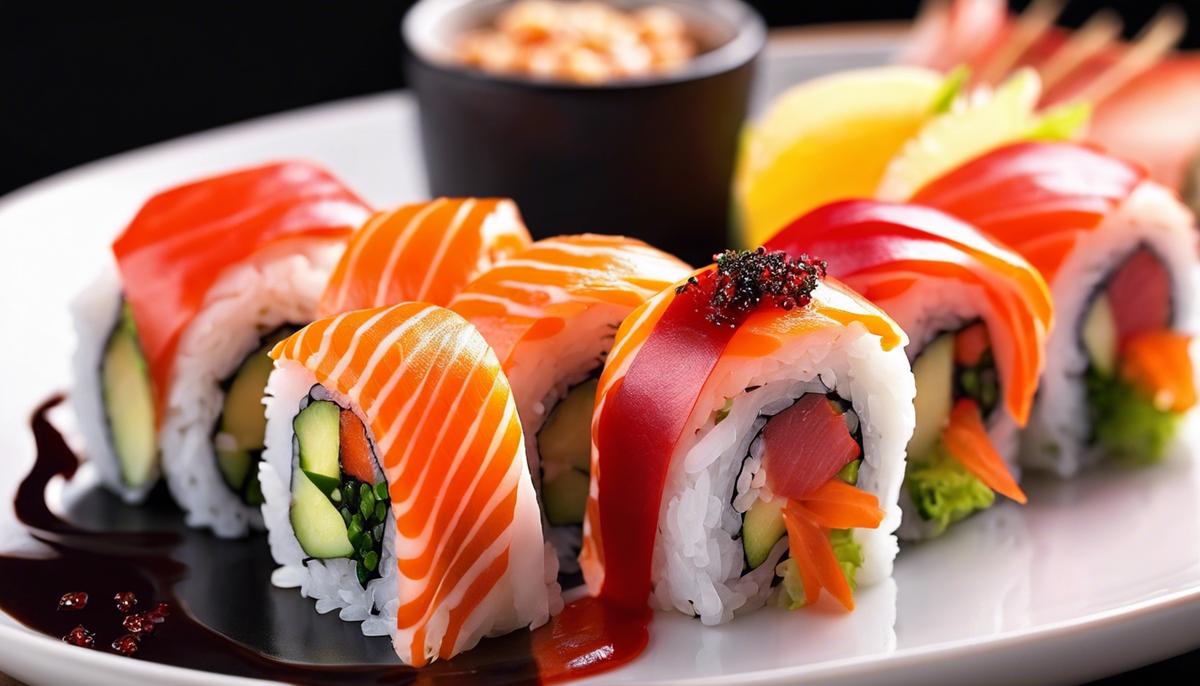
Sushi moments in series
Sushi and series – a combination that may seem unusual at first glance, but on closer inspection turns out to be a perfect symbiosis of aesthetics and entertainment. In series format, Sushi gains plot depth and offers fans and connoisseurs alike a visual feast for the senses.
Think of iconic scenes from “Sex and the City” where sushi is more than just a meal. Samantha uses it as a means of seduction in an unforgettable scene that not only captures the imagination but also brings the artistry and precision of sushi-making back to the forefront. It’s a moment that shows how sushi serves as an expression of elegance and creativity, in the spirit of the modern woman.
In “Mad Men”, scenes are repeatedly shown in sushi bars, which serve as a meeting place for the charismatic advertisers. The stylish ambience and meticulously curated sushi platters reflect the refined etiquette and designer aesthetic of the 1960s. This underlines the intertwining of traditional culture and the emerging zeitgeist.
One series that should not go unmentioned is “Hannibal” – here sushi is elevated to an uncanny art. The precise cuts and opulent presentation of the sushi in the series are in the service of the dark theme. Sushi here becomes a metaphorical representation of flawlessness and perfection in an otherwise chaotic, disturbing context.
In “Master of None”, on the other hand, sushi stands for the cultural melting pot and the search for authenticity. In sushi restaurants, the protagonists experience not only culinary highlights, but also significant dialogues and turning points in their personal stories. This shows once again how versatile sushi functions as a cultural symbol in serial storytelling.
In each of these series, sushi reveals itself as more than just a dish: it becomes the hub of culture, synonymous with taste and class, and a living accessory that drives stories forward and adds depth to characters.
The fascinating thing about sushi in series is that it helps viewers easily make a connection between the scenes depicted and their own lifestyle. In the world of entertainment, and especially in the series format, sushi proves its presence as a piece of the art of living, an unparalleled experience for both the eye and the palate. Sushi not only anchors itself as part of the upscale lifestyle, it also becomes a metaphor for the subtle pleasure in detail and for the cultivation of one’s own taste. It is precisely this feeling that captures the special atmosphere of the series worlds, in which sushi not only plays a role, but dominates the stage.
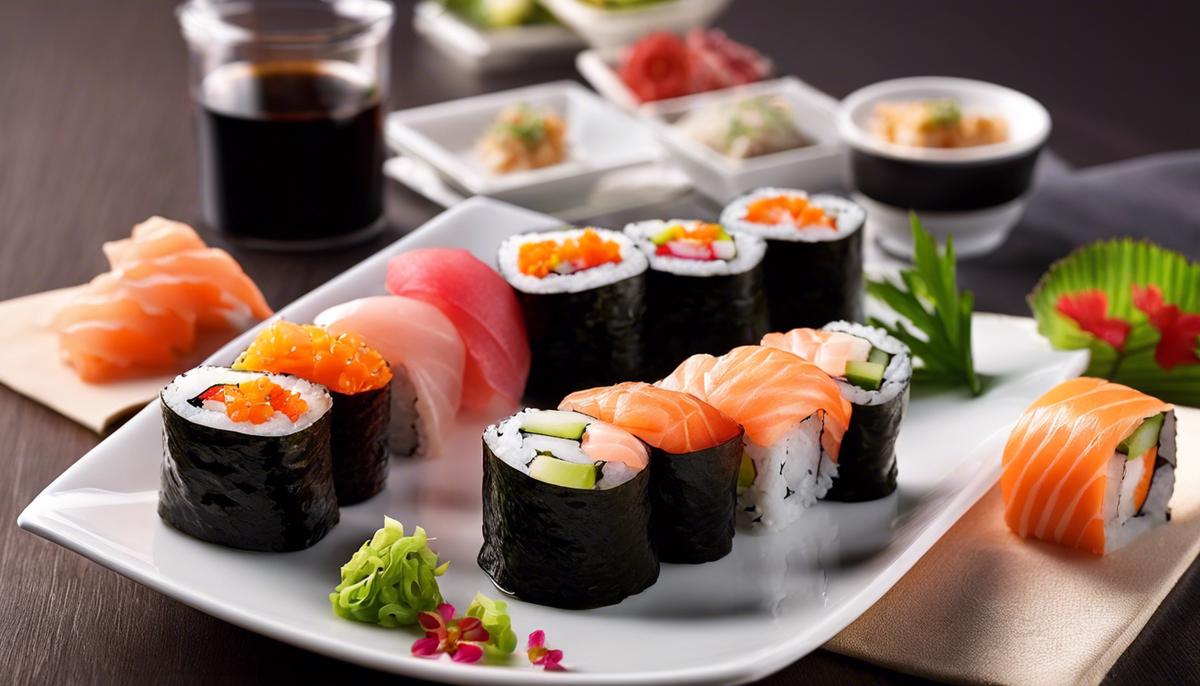
Sushi in literature and manga
Sushi as a symbol of elegance and creativity is not only reflected on the big screen, but also in our popular TV series landscapes. For example, this noble dish is cleverly used in cult scenes from “Sex and the City” and “Mad Men” to portray a touch of sophistication and a lifestyle in a class of its own. It is not only a food, but also an expression of the social status and sophisticated tastes of the characters.
In the “Hannibal” series, sushi is a recurring element that symbolizes perfection and meticulous accuracy. Every scene in which sushi is shown is a feast for the eyes – perfectly arranged platters and precisely cut fish fillets, reflecting the main character’s obsessive attention to detail.
“Sushi as a representative of cultural fusion and authenticity” applies to the modern series “Master of None”. Here, sushi serves as a catalyst for in-depth conversations about origin and authenticity. It creates a connection between cultures and is an expression of the search for identity in a globalized world.
As a cultural symbol in serial storytelling, sushi often plays a key role. It accompanies meaningful interpersonal interactions and shows developments and twists in relationships and storylines.
In TV shows, sushi becomes a visual and sensory delicacy. It shines through its detailed presentation and impresses with its aesthetics that stimulate the senses and fascinate the viewers.
Sushi is also a symbol of taste, class and sophistication and makes visible what is considered desirable far from the screen. It bridges the distance between dramatic staging and the audience’s ideal image, because anyone who appreciates sushi shows attention to detail and a feeling for the extraordinary.
If it is part of an upscale lifestyle and expresses appreciation for nuances, sushi confirms its role as a culinary luxury good. In the households of ambitious series fans, it is becoming a trend that reflects the interest in craftsmanship and culinary art.
On the TV stage, sushi dominates the atmosphere as a culturally charged actor who sets moods and shapes dialogues. It becomes a constant companion that underlines the plot and delivers a touch of refinement and exoticism directly into the viewer’s living room. Sushi, in all its variations, remains a charismatic symbol of contemporary pop culture, and in this way continues to shape our image of luxury and lifestyle.
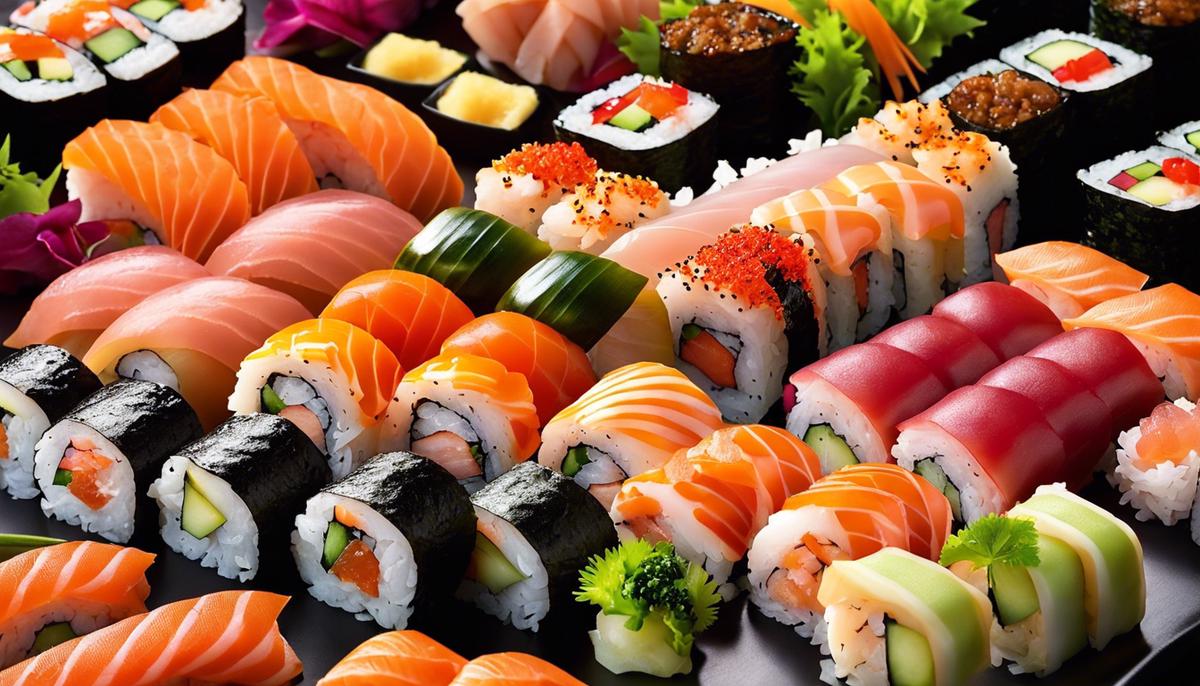
Sushi in music videos
How Music Videos Make Sushi as a Style Statement
Sushi, with its simple elegance and radiant color palette, served on ceramics that is the purest art, is increasingly finding its way into the glittering world of music videos. This phenomenal dish enters the stage not only to enchant our taste buds, but also to delight our eyes and add to the sensation of the song.
Video clip directors turn to sushi to express a touch of sophistication and hip aesthetics. It represents the polished delicacy of elite urban strollers in search of the ultimate taste and visual delight. Sushi, often caught in close-up, is so carefully arranged that it is almost a modern painting, where every roll, every nigiri tells a story.
When the rhythm pulsates and the beats drop, we see sushi on shimmering surfaces, prepared as if for a last supper, while the artist looks at it with equanimity or sensually consumes it. Here, sushi is the symbol of sophistication that carries the touch of the extravagant as it is staged in the world of neon-lit skyscrapers and exclusive clubs.
Music videos that showcase sushi communicate a subtle richness that goes far beyond financial means. The filigree arrangement of the maki and sashimi suggests meticulous precision – a picture of the perfection expected from the accompanying music track. It is an invitation to a conscious art of living.
Sushi also serves as a sign of globalization, where traditional crafts meet contemporary trends. During the chorus, a carefully arranged sushi platter can represent the melange of cultures that converge in the music industry. It becomes a bridge between different worlds – a quiet nod in the direction of cultural diversity.
The depiction in music videos promotes the image of sushi as the pinnacle of culinary luxury. It gives the viewer an idea that behind each piece there is a skill that can only be achieved through years of practice – a skill that is also projected onto the artists themselves. The staging of sushi always surrounds the artist with a nimbus of the extraordinary.
Ultimately, showcasing sushi in music videos allows fans to make a direct connection between what’s on display and their own busy lives. It reflects everyday life, but through its precise staging, it transforms ordinary moments into unique sensory experiences. Sushi is therefore not only enjoyed on the tongue, but also on the canvas, thus entering into a sensual pact with the viewer who savours every sound, every syllable, every image to the fullest.
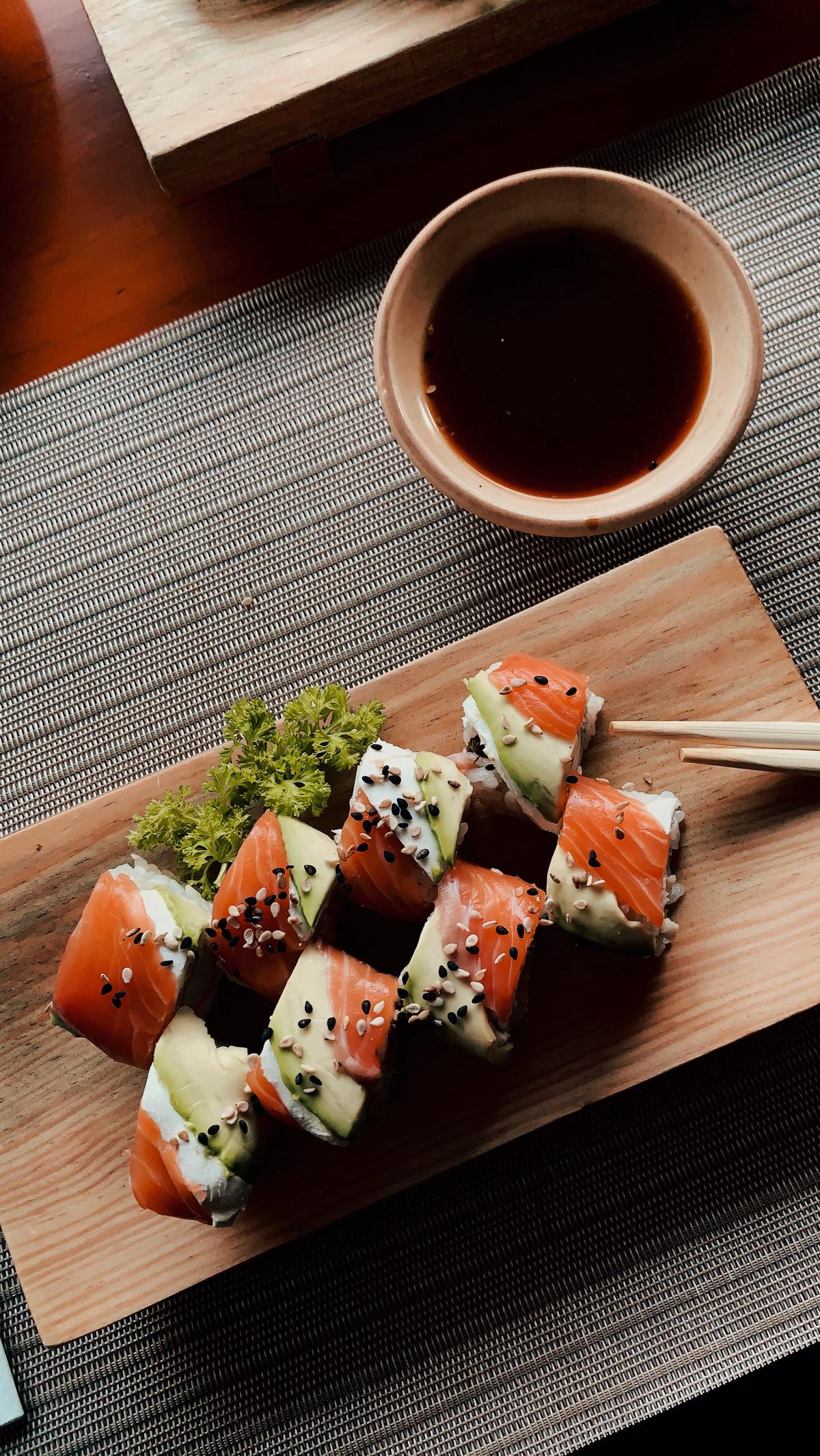
Photo by derekduran on Unsplash
Sushi in Advertising and Marketing
Why do brands choose to incorporate sushi into their promotional strategies?
In a world driven by visual culture and the pursuit of exclusivity, sushi has established itself as a symbol of elegance and subtle taste. By integrating it into advertising strategies, brands appeal to a particularly style-conscious target group and underline their affinity for high-quality and aesthetically sophisticated products.
Sushi as a style statement in the music industry creates an aura of trend awareness and upscale lifestyle. In music videos, sushi is often the linchpin of extravagant ambiences, where it not only represents the culinary arts, but also functions as an accessory that reflects the good taste and luxurious lifestyle of the artists. It is the delicate art of sushi preparation and its enjoyable presentation that appeals to an audience that appreciates the special and seeks high-quality experiences.
The elegant staging of sushi in advertising campaigns is a commitment to cosmopolitanism and hip urban aesthetics, which particularly appeals to the urban elite flâneurs. Here, it’s not just a food, it’s also an expression of cosmopolitanism and a lifestyle that looks beyond borders and celebrates the fusion of cultural influences.
The subtle display of richness and perfection that comes with sushi allows brands to send a discreet but clear signal to an upscale clientele. It symbolizes a world where details matter and where time and care are put into creating the product or service. Sushi thus embodies the pinnacle of culinary luxury – a delicacy that is not accessible to everyone, and thus becomes the epitome of the exclusive and exquisite.
In the world of advertising, the staging of sushi surrounds artists and products with a nimbus of the extraordinary. It creates a visual and emotional context that highlights not only the product, but also the way of life associated with it. This depiction allows fans to make a direct connection between what is being performed and their own lives. Such identification creates desirability and fosters the desire to be part of this seeming world.
To sum up, the use of sushi in advertising cannot be reduced to its culinary value alone. Rather, it is a multi-layered tool that communicates cultural diversity, luxury, and meticulous attention to detail. In a world dominated by images, sushi transforms ordinary moments into opulent, unique sensory experiences. It’s this capability that makes sushi a crucial part of the marketing mix for brands that want to position themselves as the epitome of quality and exclusivity.
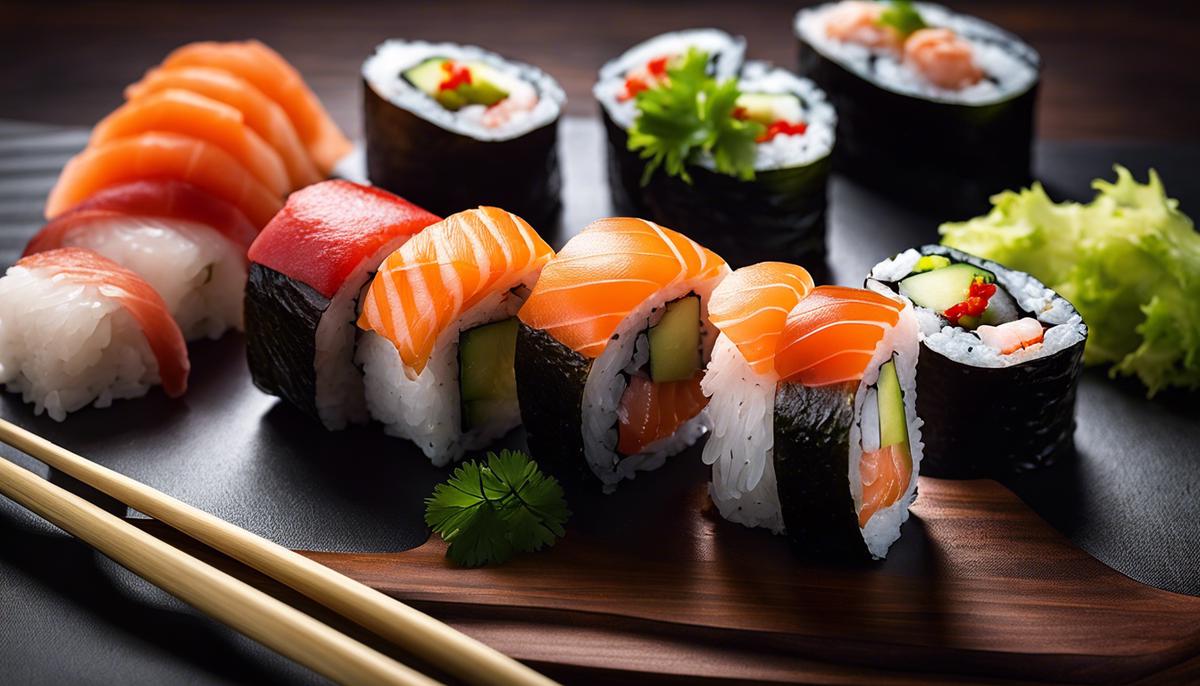
Sushi in the Visual Arts
Sushi in the Spotlight of Visual Culture: A Fusion of Elegance and Exquisite Taste
In a world where images set the tone of entertainment, sushi is emerging as a visual symbol of elegant and refined taste. It’s an ingredient that has become an integral part of the contemporary art scene – a performer who is a work of art in his own right, shaping visual cultures worldwide.
Everywhere from music videos to high-fashion campaigns, sushi finds its place as a style statement that expresses trend awareness and a luxurious lifestyle. Music greats surround themselves with stunningly staged sushi arrangements that become the expression of their own brand of coolness and sophistication. This aesthetic speaks for itself – anyone who surrounds themselves with sushi celebrates a world of fine taste and upscale living.
But the inclusion of sushi in the visual world is not limited to appearances. The advertising industry, in particular, pursues a clever presentation style that appeals to a cosmopolitan and urban elite. The marketing of products with sushi as a complementary image promises consumers that they belong to an exclusive group that appreciates the subtleties of life. This subtle association with richness and perfection makes sushi the perfect metaphor for brands looking to reach an upscale clientele.
In the advertising world, sushi creates an aura of the extraordinary and makes what is advertised stand out from the crowd. In campaigns for high-end products, it acts as a silent ambassador for attention and attention to detail, characteristics that the advertised product itself is intended to embody. Through sushi, everyday objects are placed in the context of the opulent and unique in order to reposition them in the eyes of the beholder.
Last but not least, it is the diversity and adaptability of sushi that has made it the ideal visual ingredient to communicate cultural diversity, luxury and a touch of exoticism. In a world marked by globalization and cultural exchange, sushi serves as a symbol of the harmonious fusion of different traditions and lifestyles.
In summary, it can be said that sushi is an integral part of today’s pictorial language and is an experience for the senses. It combines appearance and reality, sublime artistry and bite-sized enjoyment to transform everyday moments into sensual experiences of outstanding luxury. It allows visual culture to appeal not only to the eye, but to all the senses, telling the stories and values that are valued in a demanding society.
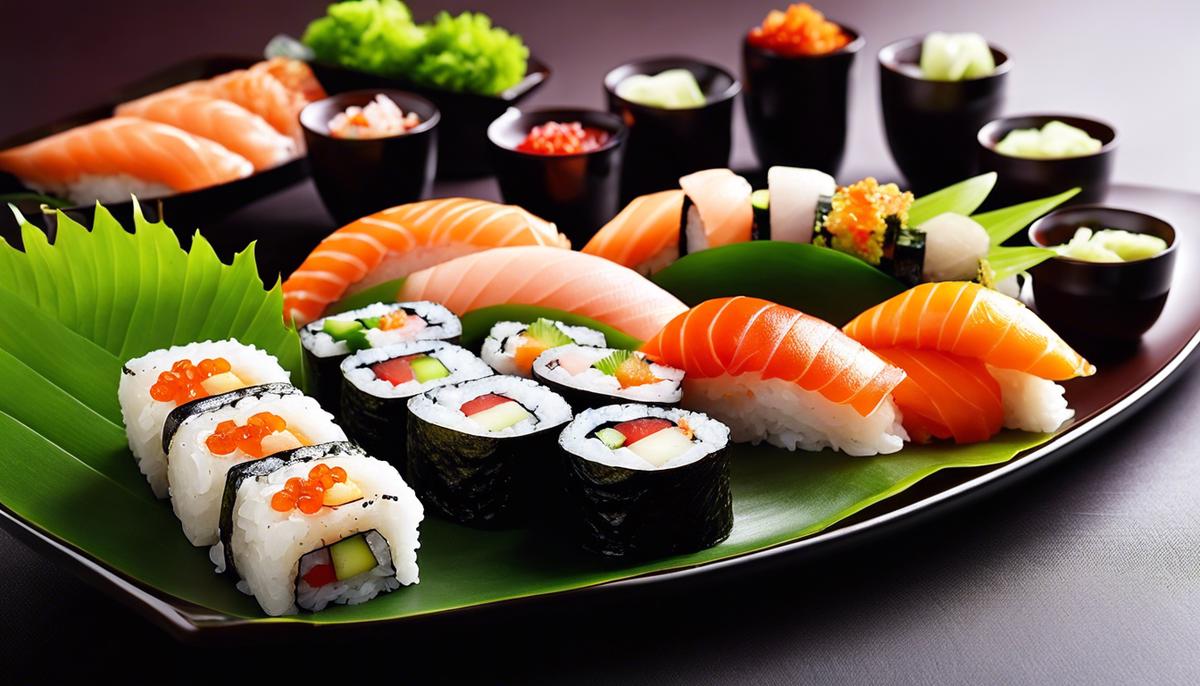
Sushi has grown from humble beginnings on the streets of Tokyo to a globally recognized cultural phenomenon that touches the most diverse aspects of our society. The way sushi is incorporated into films, TV series, literature, manga, music videos, advertising, and visual arts reflects not only the global fascination with Japanese cuisine, but also our constant search for aesthetic perfection and symbolic depth in everyday experience. Sushi is not just a meal, but a multi-layered cultural asset that is as educational as it is entertaining in its representation in pop culture and inspires us again and again.
